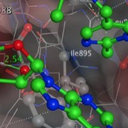Critical ventriculo-peritoneal shunt failure due to peritoneal tuberculosis: Case report and diagnostic suggestions for abdominal pseudocyst.
Ключавыя словы
Рэферат
BACKGROUND
Tuberculous peritonitis (TBP) is a well-known complication of ventriculo-peritoneal (VP) shunt treatment for hydrocephalus resulting from tuberculous meningitis (TBM). However, a case of hydrocephalus unrelated to TBM resulting from VP shunt malfunction due to TBP has not been reported.
METHODS
A 21-year-old male presented with nausea, abdominal pain, and headache. VP and cysto-peritoneal (CP) shunts had been inserted to treat hydrocephalus due to a suprasellar arachnoid cyst, replaced the VP and removed the CP in his childhood. Computed tomography demonstrated acute hydrocephalus and an abdominal pseudocyst surrounding the distal end of the peritoneal tube. Initial laboratory data showed elevated white blood cell count and C-reactive protein level, but no causative pathogen was identified. External drainage of cerebrospinal fluid (CSF) and of the fluid in the peritoneal cyst was established, and empirical antibiotic therapy was initiated. Bacterial cultures eventually revealed Mycobacterium tuberculosis infection, and TBP was diagnosed. The patient responded well to antituberculosis (anti-TB) agents and insertion of a ventriculo-pleural shunt.
CONCLUSIONS
This case highlights the possibility of CSF shunt failure and concomitant neurological sequelae from TB infection even when the pathogen has not invaded the central nervous system, as in TBM. Moreover, TBP is rare in developed countries and therefore may be misdiagnosed because of nonspecific clinical features and low sensitivity of common TB screening methods.


